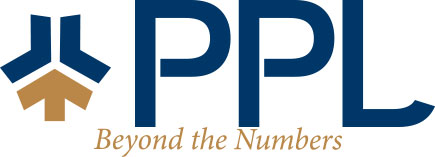Now is the prime time to start thinking about optimizing your Roth conversions, RMDs, capital gains, Medicare premiums and charitable giving before the end of the year.
Below are five things retirees should consider before December 31.
- Roth conversions ‘in the valley’
The valley is the period between when you retire and when your income streams increase again from Social Security and required minimum distributions (RMDs). The earlier you retire, the more you can live off cash, and the longer you delay Social Security benefits, the bigger this opportunity becomes.
Essentially, during your working years, the largest drivers of your taxable income are your wages and any other business income. When you retire, your taxable income, and thus your tax rates, fall. When you turn on Social Security and start taking distributions from retirement accounts, it pops back up. Hence, “the valley.”
During this time, you can move money from pre-tax retirement accounts into Roth IRA accounts and pay taxes at your current rate. If you think your current rate is lower than your future rate will be, you should work with a professional to evaluate this strategy.
2. Realizing capital gains
If you’d had a crystal ball and invested $1 million at the bottom of the market in 2009, closed your eyes and woke up today, you’d have over $6 million. Few people were that fortunate. However, it is fair to say that the longer you’ve held on to your stocks in taxable accounts, the larger the unrealized gains.
As in the strategy above, you may have a tax valley in your retirement years that allows you to sell some of those winners without paying taxes. Most people understand that we have different income tax brackets. Most people don’t know that we have different capital gains tax brackets. Most people will pay 15% federal capital gains. However, if you fall into the 10% or 12% income tax bracket, you pay 0% capital gains. Once again, consult with your tax professionals to see what is a viable strategy for you.
3. Evaluate Medicare thresholds
IRMAA is an acronym that stands for income-related monthly adjustment amount. In plain English, it makes your Medicare Part B coverage more expensive, sometimes significantly so, if you cross certain income thresholds.
The premium is derived from your gross (not taxable) income two years prior. So, as we evaluate our client planning for year-end, we are thinking about 2025 premiums. Unlike most insurance policies, if you pay the highest premium of $560 a month vs. the lowest premium of $165 a month, you don’t get any more insurance. It pays to stay below the adjustment thresholds.
- Take RMDs/fund retirement accounts
RMDs represent something you must do. Funding retirement accounts is something you can do. Ironically, you can both take money out of and put it in the same account in the same year. The IRS imposes required minimum distributions from your pre-tax accounts at certain ages, based on the year you were born. You can figure out your RMD age with the table below:
| DOB/birth year | First RMD |
| 6/30/49 or earlier | 70½ |
| 7/1/49-12/31/50 | 72 |
| 1951-1959 | 73 |
| 1960+ | 75 |
So, first you must ensure that you take your RMD by December 31. There is an extension in your first year until April 1 of the following year, though this rarely makes sense from a tax perspective.
While you may have to take RMDs, you may still be able to lower your taxable income by contributing to retirement accounts. This seems ironic in an article for retirees. The form we see most often is through consulting work, post-retirement. For example, let’s say you are 73 and have $1 million in retirement accounts and had $50,000 in net self-employment income. You could offset almost your entire RMD by funding a solo 401(k).
5. Consider qualified charitable distributions (QCDs)
The deadline for all charitable giving is Dec. 31. This is why more money is donated on Dec. 31 itself than even on Giving Tuesday (the first Tuesday after Thanksgiving in the U.S.). A general rule for those who are 70½ or older is to give from your IRA first, appreciated stock second, cash last. Just like all things in personal finance, what you do should be personal to you.
Giving from your IRA directly allows you to reduce your gross income, not just your taxable income. As noted above, reducing your gross income may reduce your Medicare premium. So, if you are just a few bucks above a threshold, you may give enough to bring you back below it.

